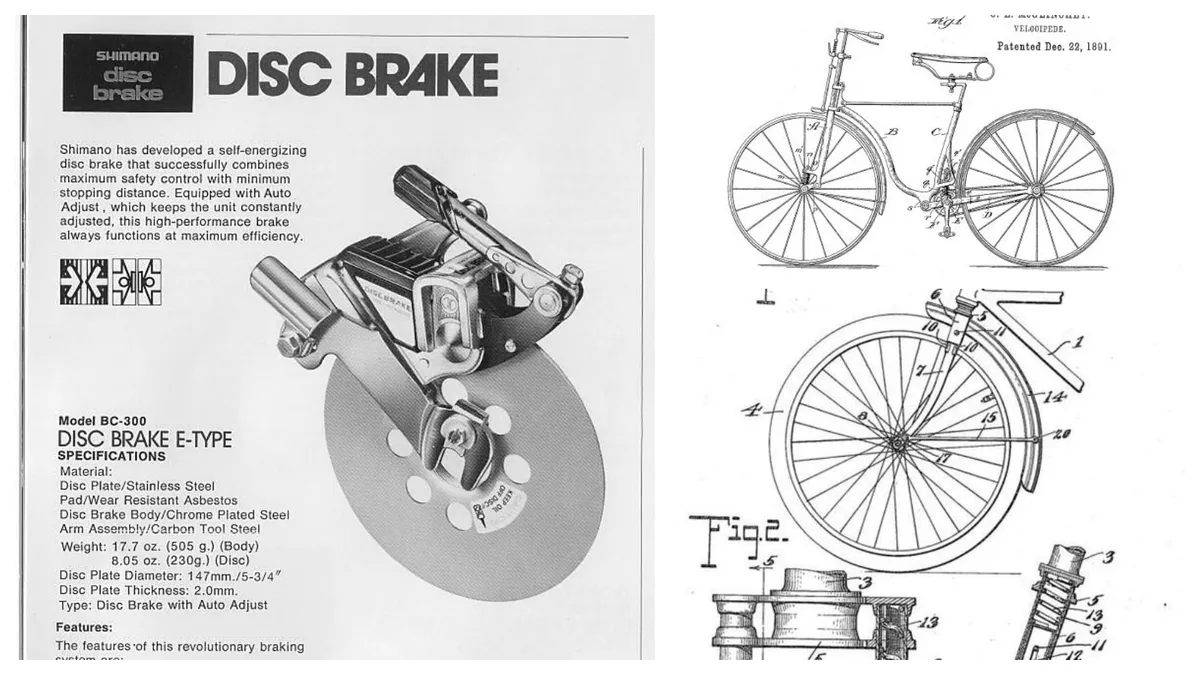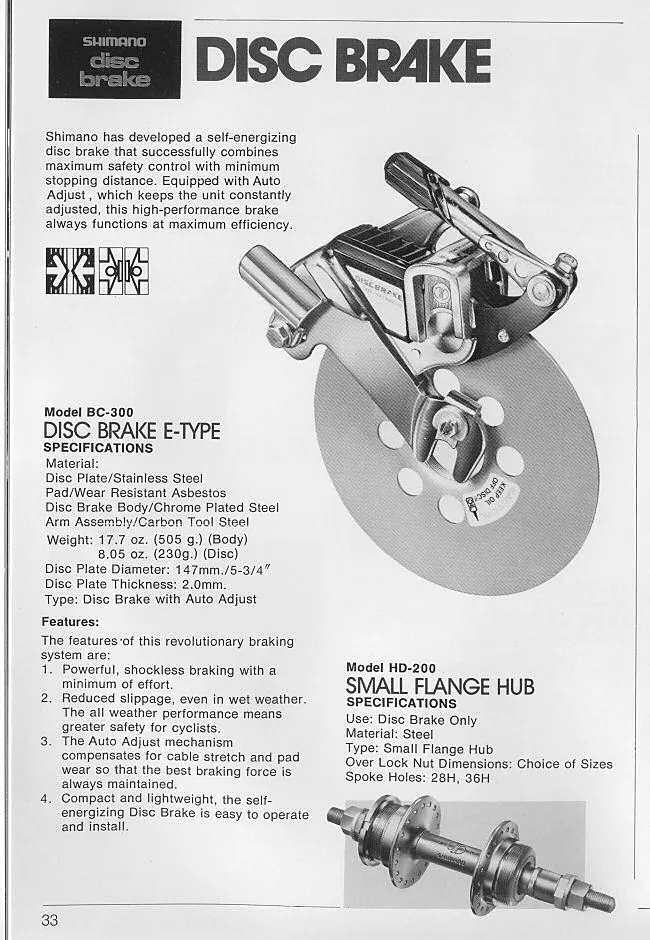With so many new products launching at any one time, the bike industry is difficult to keep up with. That being said, genuine innovation is rare and often concepts that are marketed as new will in fact be recycled ideas from another era.
With that in mind, here are six surprisingly old ideas that many will think are far more recent than they actually are.
- BikeRadar Battle: SRAM Eagle vs Shimano Eagle
- Throwback Thursday: 1992 Slingshot Team Issue
- Step back in time with these 5 retro bike games
The full-suspension bike
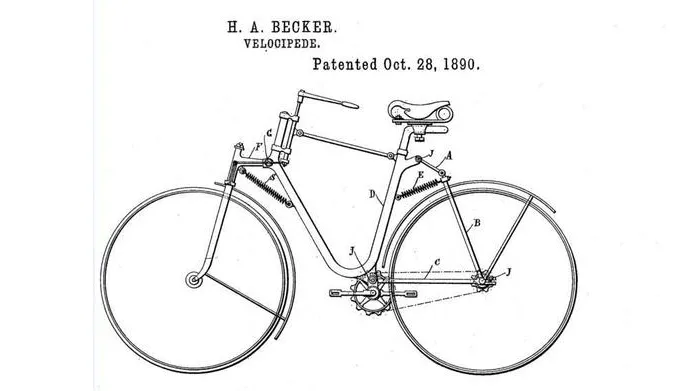
While some would believe that full-suspension bicycles arrived after the mountain bike itself, they’d be wrong, very wrong indeed.
In actual fact, way back in 1889, Hugo Auguste Becker of Monmouth, Wales had filed a patent that saw his velocipede design recognised by many as the world’s first full-suspension bicycle.
It made a whole lot of sense too, back in the days before smooth roads, and when pneumatic tyres weren’t yet commonplace and motorcars were reserved for society’s richest, the bicycle could have done with more than a sprung saddle.

Just one year after the patent was passed on H.A Becker's design, this full-suspension velocipede from C.E. McGlinchey was patented.
Both of these designs hold a remarkable amount in common with bikes of today, but the McGlinchey velocipede looks frighteningly modern for something thought up in the Victorian era.
Bicycle disc brakes

Image: Carlos Martins/Google +
While some road riders are only just coming around to the idea of disc brakes, mountain bikes have been with them for 20 years already.
All of that is pretty cute when compared to certain touring bikes that have successfully used disc brakes for almost four decades.
Yes, Shimano even sold a bicycle-specific hydraulic disc brake (BC-200) alongside a mechanical disc system (BC-300) as far back as the mid-seventies.

At the same time, other designs were also around from the likes of Phil Wood and Bridgestone.
Before this, Schwinn had used cable discs on its Sting-Ray ‘Krate’ and Manta-Ray children’s bikes. These funky seventies creations imitated muscle cars of the time and included features such as stick shifters, banana seats, suspension forks and slick tyres.
Synchro Shift
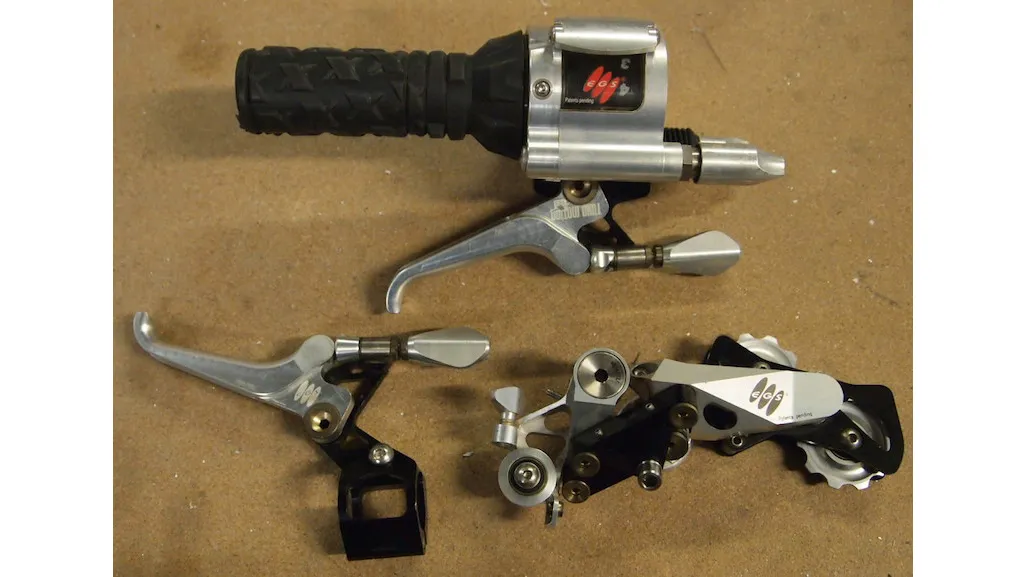
Nowadays, Synchro Shift is the name given to a function available to certain Shimano Di2 electronic transmissions.
However, Synchro Shift, which allows a rider to cycle through a multi-chainring set up with a single shifter, first debuted in an obscure mechanical component in the nineties.
The system used a single gripshift-style lever to control the shifting of both the front and rear derailleurs of a 24- or 27-speed transmission. You can read more about the original Synchro Shift here.
Telescopic suspension fork

Image: Patentpending.blogs.com
Much like the full-suspension bike mentioned earlier in this list, suspension forks as we’ve come to expect them are also widely thought of as a development that came with mountain bikes.
Although we aren’t sure this is the first telescopic suspension fork, this 1922 patent from G.W. Sage Jr. surely must be one of the first of its kind.
Its conventional telescopic build and coil sprung internals aren’t miles from forks produced seventy years after, and there are even mudguard mounts.
Plus tyres and ultra wide rims
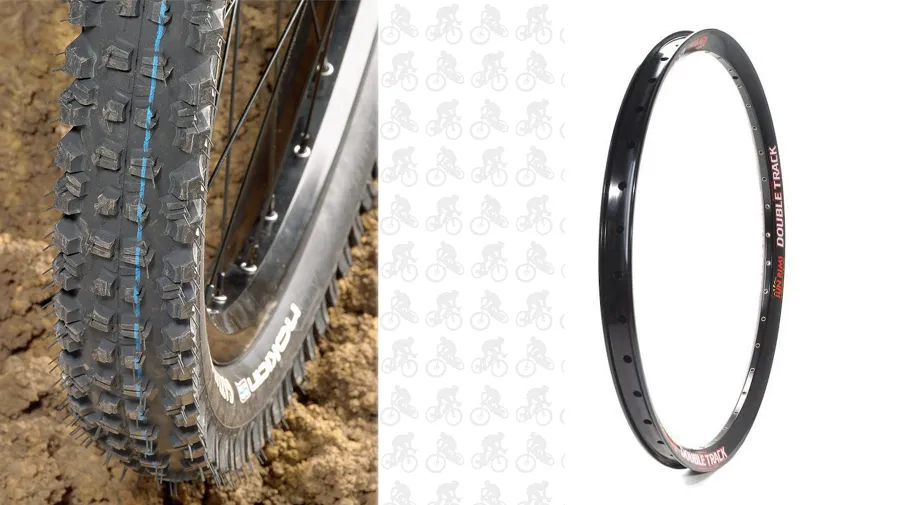
Over the last few years the industry has steered people towards fatter tyres and rims, with the prevalence of the plus standard being particularly obvious.
But let’s not forget that around fifteen years ago Nokian had a 3in downhill tyre, the mighty Gazzaloddi.
The same can be said for the latest generation of extra wide rims, which often boast internal widths of 33mm or wider. All of which were beaten to the wideboy race in the late nineties by Sun Ringle and its monstrous Doublewide rim, with its outrageous 46mm external and 33mm internal width measurements.
The 650b wheel

People new to the sport and those not jaded by the wheel size debate may be entirely unaware that the 650b or 27.5in wheel is, in fact, seriously old.
The term 650b actually originates from a French sizing system where it was commonplace for touring bikes and tandem bicycles.
By the end of the 20th century the 650b wheel was nearing extinction, but a twist in the world of mountain bikes saw something of a renaissance for the size.
Today, the 650b wheel has almost entirely replaced the once ubiquitous 26in wheel.
The size is gaining further momentum in the world of adventure road bikes too, where its additional tyre clearance and cross-compatibility with mountain bike components is valued.
There are plenty more examples to add to this list, feel free to add your own using the comment box below.

